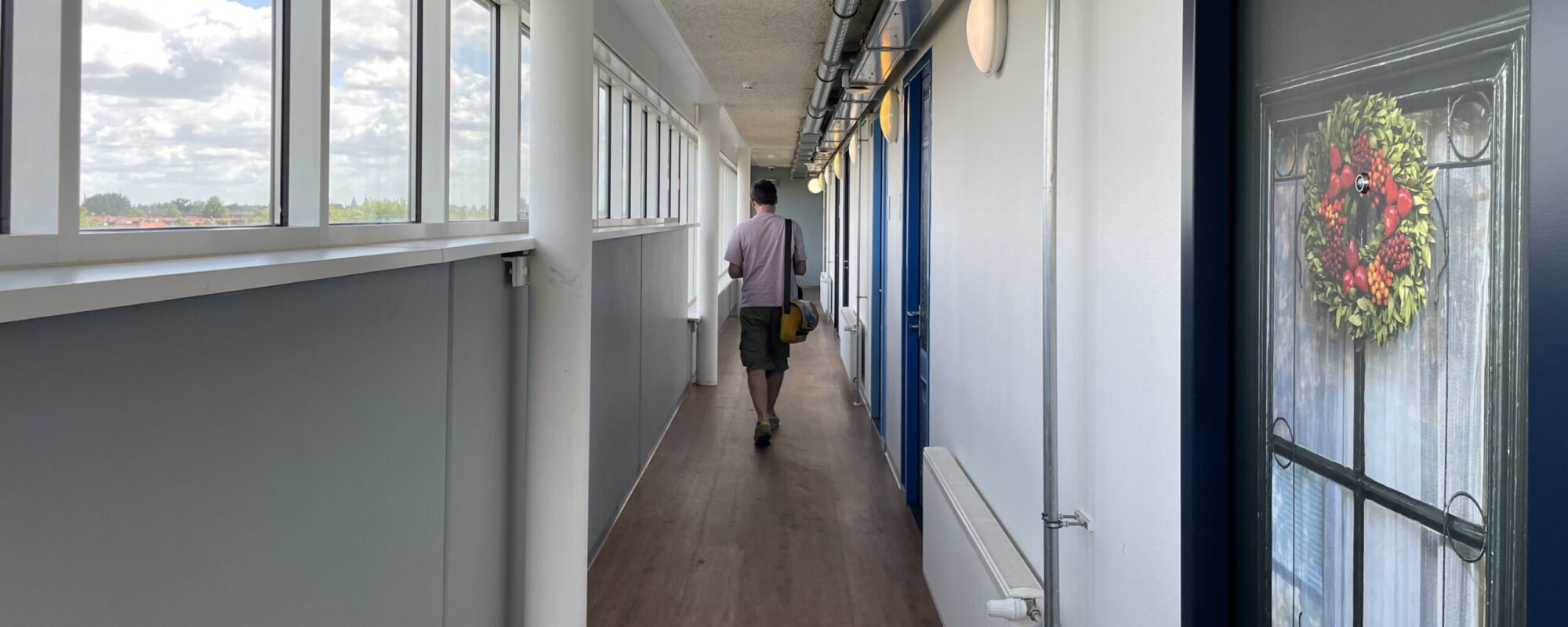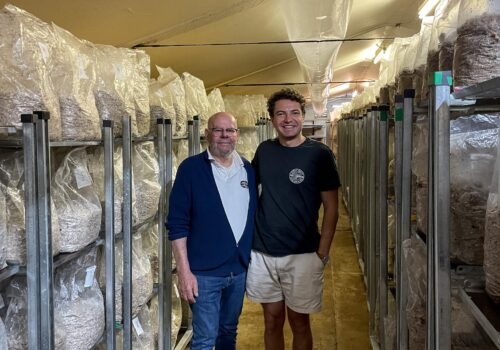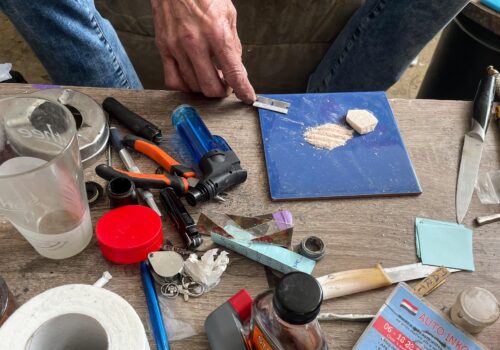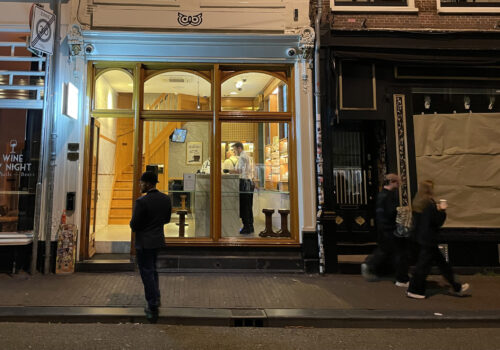AMSTERDAM — Beyond the check-in desk and lobby, an outdoor patio was furnished with colorful benches and picnic tables reminding me of a modern luxury apartment building in Washington, DC. The housing shelter was in a residential neighborhood, surrounded by middle-class and upmarket apartment buildings. Garlands of orange flags decorated every wall in celebration of the Dutch national soccer team, which was performing well in the European Championship.
That impression quickly faded as I moved upstairs to the living quarters. The first to fourth floors were earmarked for temporary housing while the fifth to ninth floors were occupied by studios for permanent residents—10 per floor. Unlike the lobby, the walls here were grey and my boots stuck to the uncleaned floor.
The first group of three men we encountered on a shared balcony looked in rough shape. Bent over, haggard, sipping beer, smoking cigarettes. Has Cornelissen, the veteran street outreach worker who let me join his field work, knew some by name and questioned them about the local street drug supply as I wandered. A shared kitchen area left much to be desired, a lone kettle attached to the wall with a metal cord lest it disappear.
Could a focus on low-barrier housing and Housing First programs, which allow people to access housing benefits even if they are using substances (i.e. drugs and alcohol), rather than clinical addiction care be the solution to improving public safety and reducing individual harm caused by the opioid epidemic and similar crises?
American society tends to violently disagree. Yet Dutch experts and field workers I spoke with all took for granted that housing is a prerequisite for a reduction in public nuisance and the self-improvement society expects from people struggling on the street with substance use ranging from alcohol to opioids to crack cocaine.
The difference in approaches is reflected on the streets of the two countries’ cities even though Netherlands and the United States have similar rates of homelessness, 0.17 and 0.2 percent, respectively. But five months into my stay in the Netherlands, I’d be startled to encounter people on the sidewalk mumbling to themselves or yelling at the sky—a daily occurrence in many US cities.
And the drastic reduction of public nuisance is only one of the benefits of low-barrier housing and Housing First programs. Fixed accommodation tends to significantly improve the lives of those who receive housing by allowing them to form healthier habits.
In a previous dispatch, “Solving the Dutch Heroin Crisis” I focused on medical interventions addressing problematic opioid use. But as I’ve come to learn, medical interventions alone can’t reduce the public nuisance and individual harm caused by problematic substance use, particularly for those without housing. Moreover, for substances like crack cocaine, GHB, meth, and many others with high potentials for problematic use, there are currently no straightforward medication-assisted treatment models yet available. So, I followed my nose to see what the Netherlands had to teach.
Gerrie’s story
Gerrie was looking at his flip phone when Has and I walked into the office of the resident social worker on the ninth floor of the housing shelter. Initially uninterested in us, Gerrie became loquacious when he discovered I am American. Within minutes, he rushed us to his room, thrilled to show off his collection of hundreds of Hollywood movie DVDs.
He recounted his childhood growing up with violent alcoholic parents in the shadow of World War II and learning to steal at age four. In and out of prison for theft and petty crime, he took care of his parents in their senior years. When they died, he found a placement in a permanent studio in this housing shelter. Like every cocaine dealer I’ve spoken with so far, he swears his coke’s quality is better than the rest, but he’s adamant about not selling to people he doesn’t know or those who’ve never used before—he doesn’t want others to go down the same road he did.
Gerrie is one of the many beneficiaries of a housing policy that began in the mid-1990s and expanded in early 2006 to include Housing First. Dennis Lahey, executive director of MDHG, Amsterdam’s self-proclaimed “Junkie Union,” called the government’s new strategy “a deal they can’t refuse.”
“For everyone that came through the door,” he explained, “we’ll give them housing, psychiatric help, help with money problems, and when you’re through you’ll have a home with the most freedom possible given your situation and level of responsibility.” And the clincher? No need to stop your substance use.
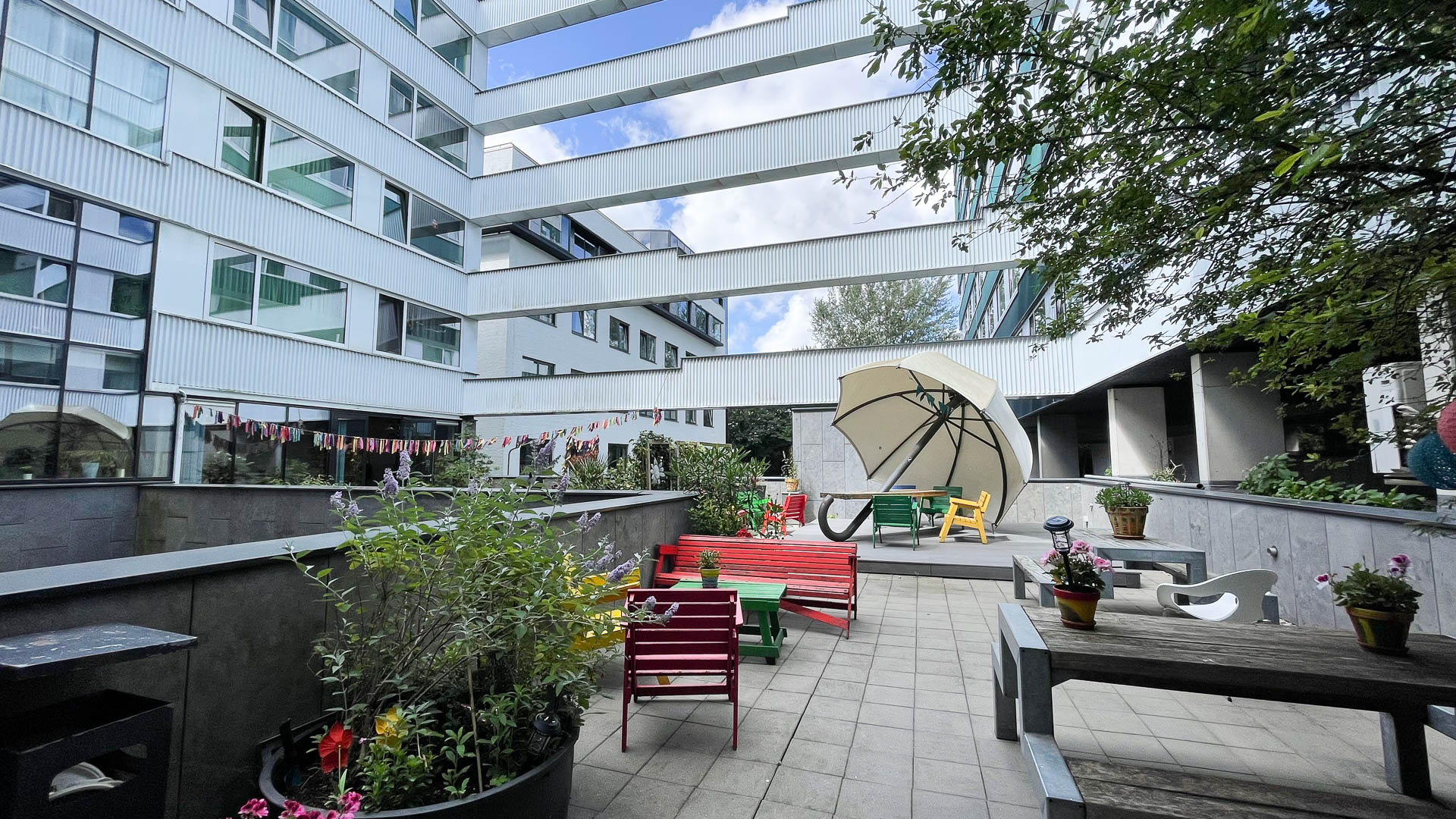
Previously, people seeking government assistance, particularly housing and residential treatment, were told to stop using substances first or come back later. Similar to in the United States today, the vast majority of available beds were restricted to those who agreed to get sober. And just like the US today, Dutch cities were filled with people sleeping on the streets, loitering by train stations, hanging out in parks, and openly using alcohol and drugs. And now, while visiting this summer, a friend asked, “Where are the homeless people?” So I told them about Gerrie.
His story was made possible by an influx of national government funding for housing for people considered to be a public nuisance and considered not self-reliant. Municipalities used the money to create more capacity and incentivize better local coordination of care among previously disparate nonprofit organization efforts. Those groups began sharing data about individuals in their facilities and collaborating over placing homeless people in shelters depending on capacity.
How it works
Then and now, the Dutch housing program guides people through three laddered levels of housing. As a first step, those experiencing homelessness and using alcohol and drugs are placed in temporary night shelters. Sleeping in dormitory style bunks four to eight in a room, they are provided with free breakfasts and dinners but are required to leave during the day for a daily activity.
At this point, people are assigned a social worker with whom they make life improvement plans. With the social workers’ help, they apply for benefits and social housing, are taught to manage their budgets and pay off their debts, schedule medical care and sign up for daily activities to help structure their days. Examples of daily activities include assisting staff at shelters, working at a bike repair shop or getting trained in a new trade. Those who can stick to their improvement plans are eventually offered permanent studios in a facility like the one where I met Gerrie, giving them more autonomy.
This permanent studio with shared common areas and communal meals is where many remain, according to advocates. Those who prove to be most responsible and stay out of trouble with the police are in time placed in their own separate apartments with wrap-around social services.
At first, the organization owns the housing, but after a few years without incident, the apartment ownership is transferred to the person’s own name. These apartments are purposefully scattered in residential neighborhoods of varied income levels; no more than two on any street to avoid creating “bad” neighborhoods. Living in mixed-income neighborhoods encourages good behavior through social pressure to conform.
Willemijn Los, a shelter manager who works at a daily activity center, explained the arrangement: “The carrot is that you’re going to get your own house and maybe you’re going to get a wife. A normal life. Or maybe not even have a normal life. Just live your life and stop being a nuisance.” She went on to describe the proverbial stick: “If you don’t comply, then you’re back on the street and you’re going to be imprisoned.” Police hand out fines for loitering or congregating in large groups and can issue restraining orders forbidding people from entering certain neighborhoods. Too many infractions and the next step is jail. Most take the deal.
In 2006, the Netherlands took the plan a step further by implementing a Housing First program that allowed some people to skip the first two laddered steps and live immediately in private apartments with the support of wrap-around social services. The plan focused on the focused on the cities of Amsterdam, Rotterdam, the Hague and Utrecht.
As we talked, a man cycled past our bench, “See Mr. Muscles over there, he was a hardcore drug user,” Willemijn said. “But he got his own house, he got a job. He makes 3,000 euros net a month as a cleaner and sends money to his mom. He still occasionally uses drugs but he’s doing fine. The basic thing is to get people off the street. How are you going to get better if you’re homeless?” I didn’t have a good answer.
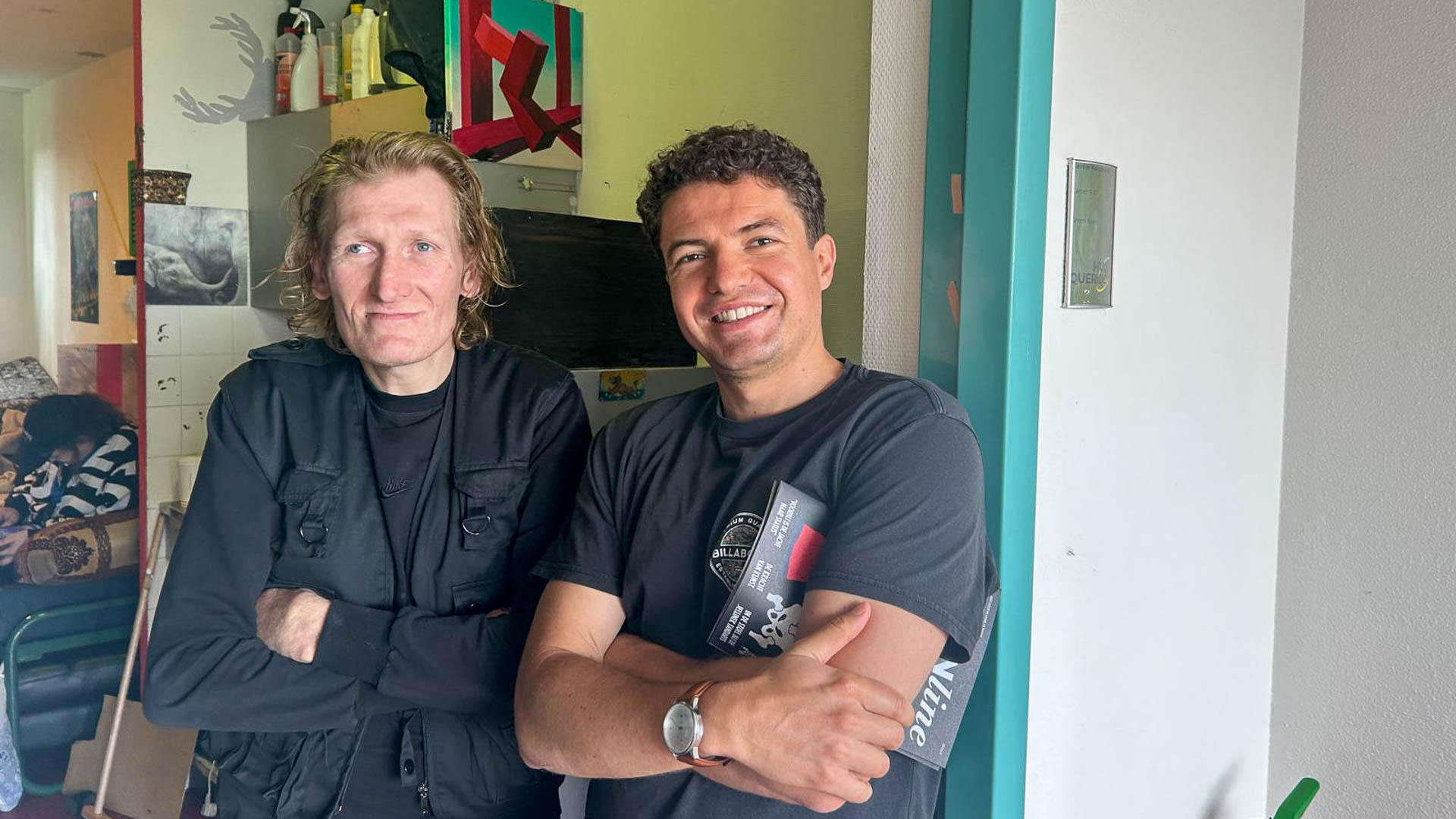
So far so good, but how did this radical change in approach come about?
John-Peter Kools argues that the current policy arose because rather than trying to eradicate substance use, the Dutch decided to manage it. “We are a country of engineers,” he said. “For example, we can’t control the sea, but if we build certain constructions then we are able to manage it. That attitude is deeply rooted in the Netherlands.” And for good reason, growing storm surges and rising sea levels are an existential threat to the country whose surface area is 55 percent flood-prone.
Kools is a drug policy adviser at the Trimbos Institute, a government-affiliated think tank for mental health and addiction research, and has been working in harm reduction in Amsterdam for more than 40 years, beginning as one of the first staff at MDHG. He also co-founded Mainline, an organization focused on educating hard drug users and advising government institutions about harm reduction approaches. Mainline has worked closely with me in my research.
Recalling living in Amsterdam in the 1980s, John-Peter described no-go zones where people who used and sold illegal drugs controlled the streets and even police were reluctant to enter. The Zeedijk directly off Amsterdam’s Central Station was one such street overtaken by people openly selling, using and sleeping on the street. “Police would periodically come through, clearing the streets with their batons,” he said, “but by the time they’d get to the end of the street, users would already be settling back in at the start.”
Cedric Chavet, the coordinator for the drug consumption room at AMOC, agrees. AMOC is one of the only social services organizations in Amsterdam serving non-Dutch citizens. It is one of the busiest consumption rooms in the country and one of the few in which injection heroin use is prevalent, driven mostly by Eastern European migrants. With short, cropped hair and a tired but driven look, Cedric has spent 20 years working in harm reduction around the world, including in the United States.
Taking me off to the side in the drug consumption room, Cedric explained in his Swiss accent, “The Netherlands is a business.” The Dutch “are pragmatic, not dogmatic, and homeless people using substances on the main streets are bad for attracting business and tourists. It’s a win-win for the public and for people experiencing homelessness.” Today, Zeedijk street is a bustling pedestrian commercial zone filled with tourists, unrecognizable from its past.
His claims are bolstered by a recent report by the Dutch government demonstrating that every euro invested in Housing First leads to 2.5 euros in savings for society. Providing social housing, even with wrap around social services, is much cheaper for the government than having people bounce around between emergency care, shelters and prison.
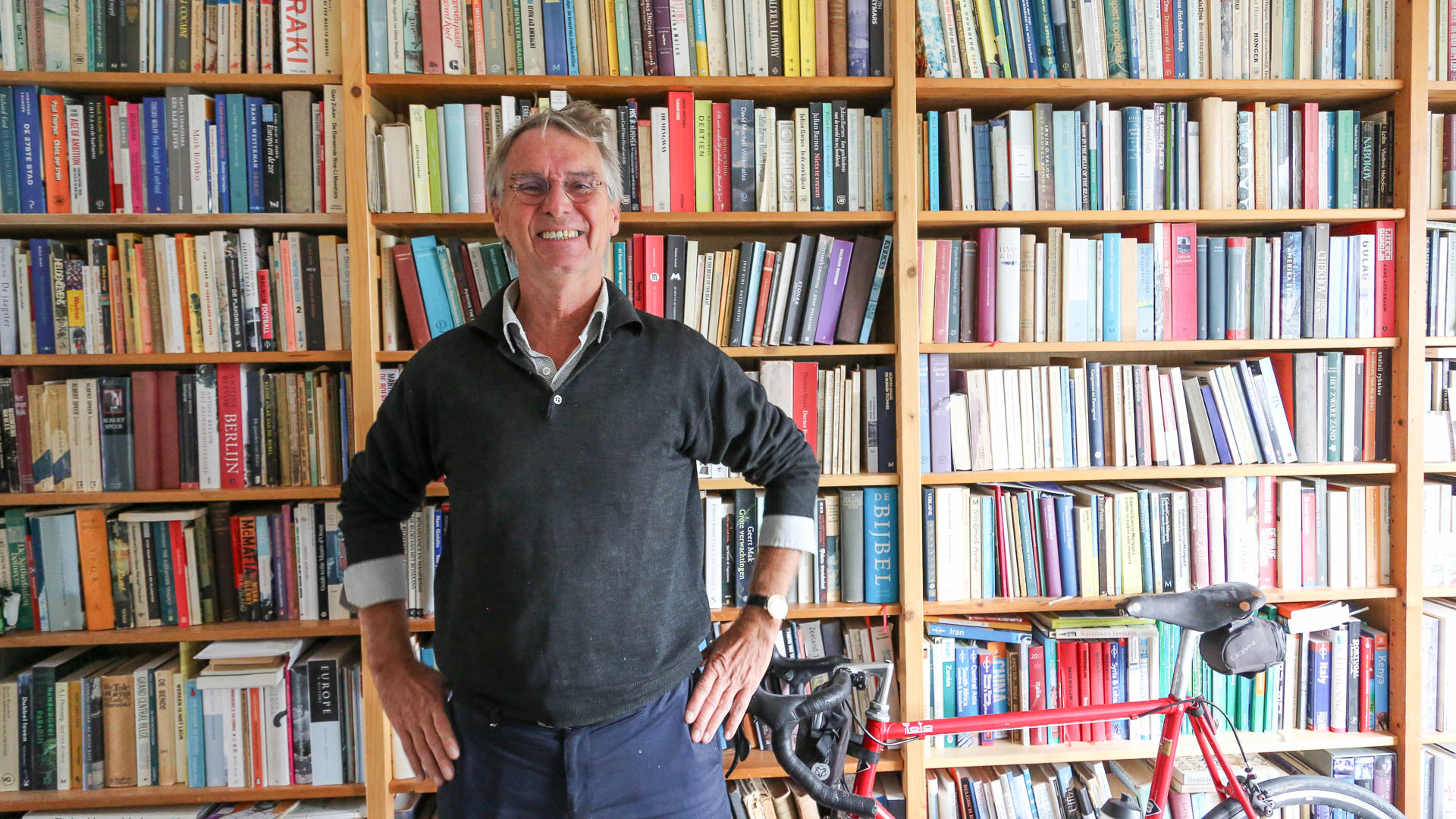
As John-Peter sees it, the sea-change in approach started in earnest when the police themselves joined calls advocating for different policies. They were tired of risking their lives fighting and jailing the same people only to see them come back a few months later—it was demoralizing. “It took 15 years of beating people up before they started to realize ‘Hey, this is going nowhere!’” he said.
The police seem to agree. During a presentation at a police station in east Amsterdam, officers explained that they were concerned about recent cuts to social and harm reduction services offered to individuals experiencing homelessness. Decreased funding for social services has already led to growing numbers of people on the street, which in turn means more officers responding to public nuisance calls, stretching an already short-staffed force. The results were evident in nearby Oosterpark, which is now home to dozens of homeless people congregating to openly drink and use hard drugs, affecting public order.
John-Peter argues there is another less-discussed reason for the Dutch success story: good infrastructure and revitalized neighborhoods. Neighbors and local businesses pressured municipal governments to invest in downtown areas that were no longer safe for their children and customers. “The city had limited funds but they started buying older buildings and allowing people to start shops in them,” he said. The first example was the five-star Barbizon hotel near the Zeedijk. “It was really put there as a bridgehead for good commercial and public health investments.”
Gradually, revitalization efforts spread to the entire area, which has become a mecca for tourists looking for shopping, food, and coffeeshops. While I do not have the space here to expand on the importance of neighborhood revitalization, it may be just as important a factor as the others. Researcher Bruce Alexander found in his seminal “rat park” studies that rats that lived in lively communal settings preferred unadulterated water to drug-infused water.
The national government’s new policy was laid out in a 1995 report. It “saw no reason to base its policy on the idea that any use of the drugs concerned in itself represented a risk to society.” The risk, according to the report, depended on the circumstances and the extent of the substance use. However, it added, “the use of drugs can never excuse damage and nuisance to other people.” People were expected to take responsibility for their actions and comply with the self-directed program agreed with their social workers.
A fascinating read for drug policy nerds, the 72-page report lays out adjustments to law enforcement, health care, social services and housing approaches that are still relevant today. The policy was followed by a bolstering initiative in 2006 focused on the four largest cities in the Netherlands—Amsterdam, Rotterdam, Utrecht and The Hague.
Housing First for the most difficult cases, does it work?
Experiencing homelessness is a varied affair. Most live through it for brief periods. However, for a small but highly visible number, homelessness entails years surviving on the streets, shuttling between shelters, jail and emergency rooms. Mental illness and substance addiction make these cases worse.
A recent Trimbos Institute report looked at the impact of Housing First for such individuals with difficult cases. Rather than going through the laddered approach, they were given apartments or houses to themselves immediately. Their age ranged from around early 20s to late 60s. Over 67 percent had been homeless for more than two years, and 82 percent were men. Encouragingly, 83 percent remained housed. They paid rent on time (usually with their social benefits) and did not cause nuisances. The dramatic success rate demonstrates that even with co-occurring mental health and addiction challenges, individuals can thrive in independent living accompanied by social service supports.
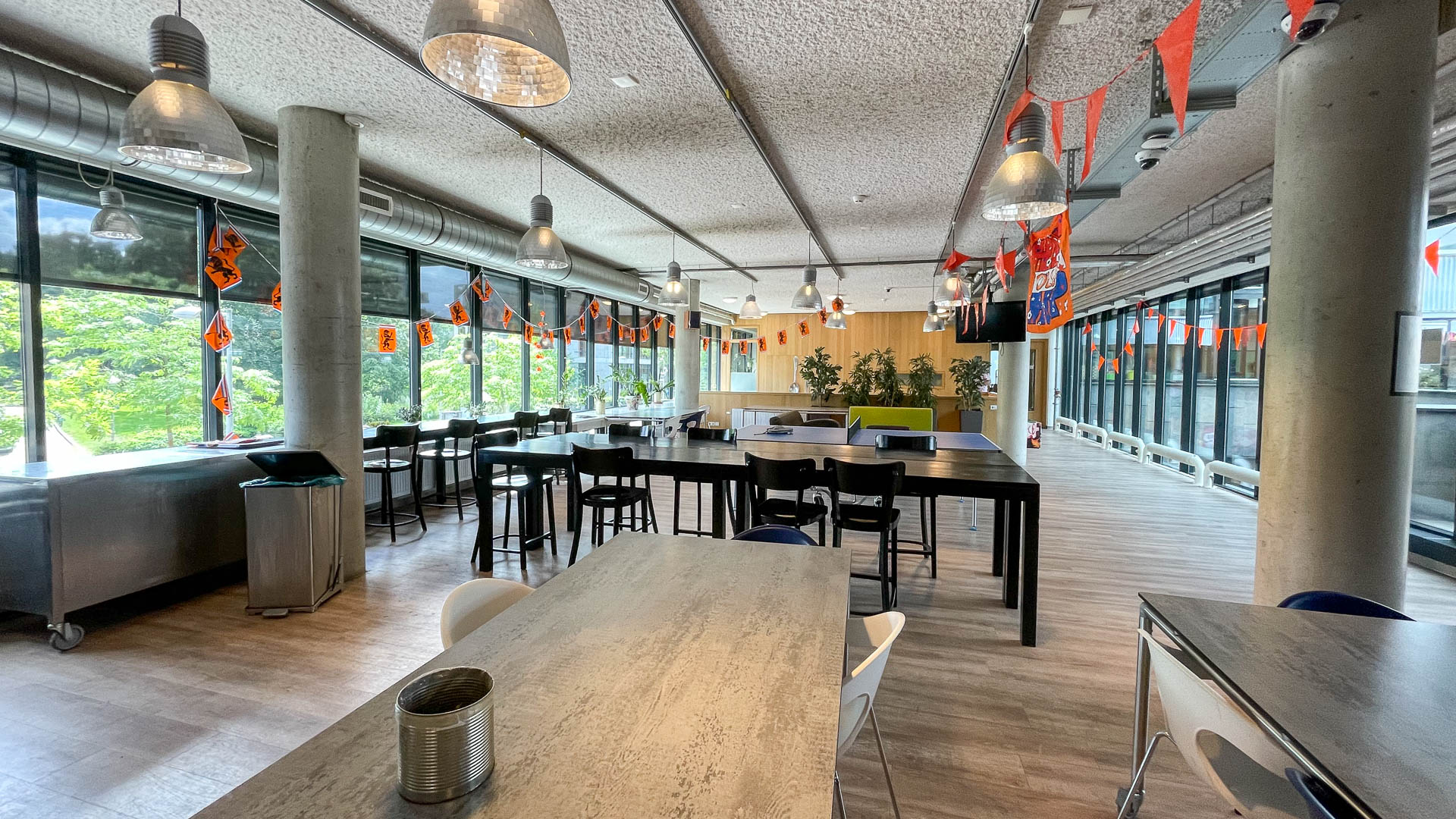
Most participants continued to stay on welfare, and while the report’s authors calculated only a 2 percent increase in participants doing paid work, the amount of structured daytime activities nearly doubled. The number of participants’ encounters with the police dropped from 54 percent to 32 percent, and incidence of jail time decreased by a third. Housed individuals also saw a substantial decrease in nuisance complaints against them, with 72 percent getting none at. Overall, participants were very happy with their Housing First program, with 92 percent indicating it helped them move forward in life.
The report suggests that providing Housing First to people with the most difficult cases does not suddenly transform them into model citizens giving back to society, as American culture would hope of them. But it does invite us to consider whether “being productive” is the wrong focus. Housing gives people dignity, compassion and opportunities to build a new sense of purpose. Just as important, it improves lives for the rest of us by making it safer to walk home at night. It also reduces the pressure on health care and law enforcement services as well as taxpayers.
Dennis Lahey, of Amsterdam’s Junkie Union MDHG, whose organization is most in touch with this population of difficult cases, told me that “90 to 95-percent of those who come through our door have had severe traumatic sexual, physical or emotional abuse. So of course they have this anti-authority mindset because authority figures from parents to police to medical providers have many times harmed or ignored them.”
His “first surprise was how little we talk about drugs,” he added. “If they can afford it, they don’t have problems with it, it’s a form of self-medication.” He argues that it is not users who have failed society, but society that has failed them. He believes Housing First helps address wrongs while benefiting everyone else in the process.
Integration over re-integration: what role do police and incarceration play in the government’s new public health approach?
Although housing and public health approaches were the new driving force, John-Peter says, law enforcement still played a substantive role in the strategy of the 1990s and 2000s, leading to a temporary rise in incarcerations. Overall numbers suggest that in 1996, around 37,000 people were detained in Dutch prisons. The number peaked at around 47,000 in 2007 but by 2021, had dropped to around 29,000.
Thomas Martinelli, drug policy adviser at the Trimbos Institute, explains that starting in 2001, people who were judged to be addicted and committed 10 crimes or misdemeanors, regardless of severity, entered the two-year Rehabilitation of Drug-Addicted Offenders Program (SOV), later changed to the Institution for Repeat Offenders (ISD). The goal was to create special pathways for repeat offenders by getting them off the streets while slowly re-integrating them into society with follow-up treatment as necessary. While a good idea in principle, the programs’ effectiveness in reducing recidivism and improving resocialization is still debated.
To understand how policy discussions play out on the ground today, I turned to Dew Koesal, executive director of Surant, a non-profit organization that helps re-integrate convicts into society. Dew was born in Suriname, is of Indian descent and moved with his mother to the Netherlands when he was 13. After studying law, he joined the field of post-prison integration because of his experience seeing his own father in prison while growing up, and the struggles he, his father and family faced along the way.
His determination comes from his experience that “the children are victims of the system too.” He added that if he can help these (mostly) adult men settle their lives, “then the children, especially the sons, have less chance or reason to do what their fathers did.” Research shows that children with incarcerated parents are at least three times more likely to become involved with the justice system than those who don’t.
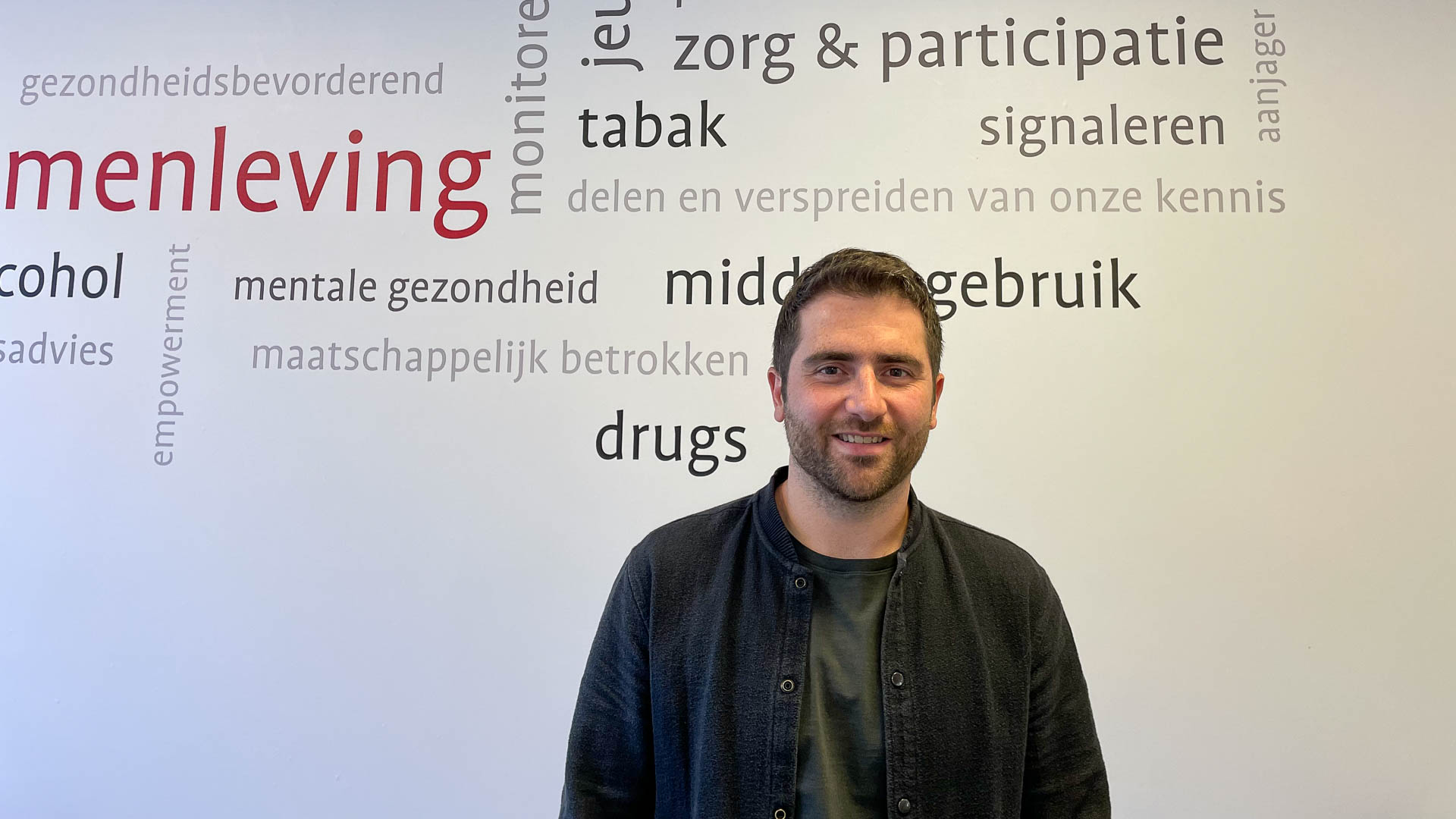
Dew talks about integration rather than re-integration because “most of the people we are talking about, they didn’t have anything, they don’t know how to live a normal life.” Living a normal life is strange, being off the street is new. Housing with full social services gives ex-convicts a place to start anew. Structuring their days with activities and getting a job is the next critical piece, and here former inmates have a huge advantage over their American counterparts.
While criminal records in the United States are life-long and can be seen by prospective employers, the Dutch see that as a violation of privacy. Employers may ask the government for a Statement of Conduct (VOG) about a potential employee. The VOG states only that, in the eyes of the government, the person in question is in good standing. If a job candidate has an active and relevant criminal record, the government tells the employer it is unable to give out a VOG for that person for that job. At no point does the government disclose to an employer what the job seeker’s criminal record contains.
If a person commits a financial crime, the government will not provide a VOG to potential employers in the financial sector, such as banks. However, it will provide a VOG to a restaurant looking to hire that person as a server because the government considers past financial crimes shouldn’t prevent people from working in non-related industries. Furthermore, many criminal records, excluding sexual and terrorist crimes, can also be cleared after several years (anywhere from four to 30) depending on the severity of the crime and whether the person has been again involved with the justice system. “I think it’s important,” Dew told me, “because you don’t have to be a victim of your past all the time.”
Dew gives the Dutch system a score of six out of 10 but would make two big changes. He believes it should allow convicts to slowly re-integrate into society by letting them work outside first for a day, then a week, then a month to ease the transition. Similar to the Scandinavian model. Going from ultra-structured prison life to completely unstructured civilian life is overwhelming, he said.
Dew also wants more focus on reconnecting former convicts with their families because they can be important support systems in ways social workers and parole officers can’t.
Have the Dutch achieved the end of homelessness history through socio-capitalist utopia? Not so fast
Twenty-nine years since “the deal they can’t refuse” approach began, the results are clear to locals and tourists alike. Police and civilian no-go zones are things of the past, and cities big and small are safer than they were. However, while the situation is better than it was 30 years ago, there has been a negative slide during the past 10-15 years.
When speaking with Dennis, Cedric, John-Peter, Has, Dew and myriad others who work in the field, it became clear that while the Netherlands’ new far-right led coalition government poses the greatest threat to social services in a generation, its funding has already been on a slow decline for the past decade or two.
In a way, the Dutch are victims of their own success. Why fund solutions to a problem you no longer see? But that conclusion alone is simplistic because housing is one of the most challenging problems for all income levels in Dutch society at the moment. The United Nations estimates that the Netherlands currently faces a crisis shortage of close to 400,000 homes. Housing prices have sky-rocketed, increasing pressure on affordable housing in particular.
Starting around 2015, organizations saw a rise in the economically homeless, people with “normal” jobs and friends but who had fallen on tough times and couldn’t afford rising rents. The tightening housing market, rising costs and growing number of needy put pressure on the system as funding started falling.
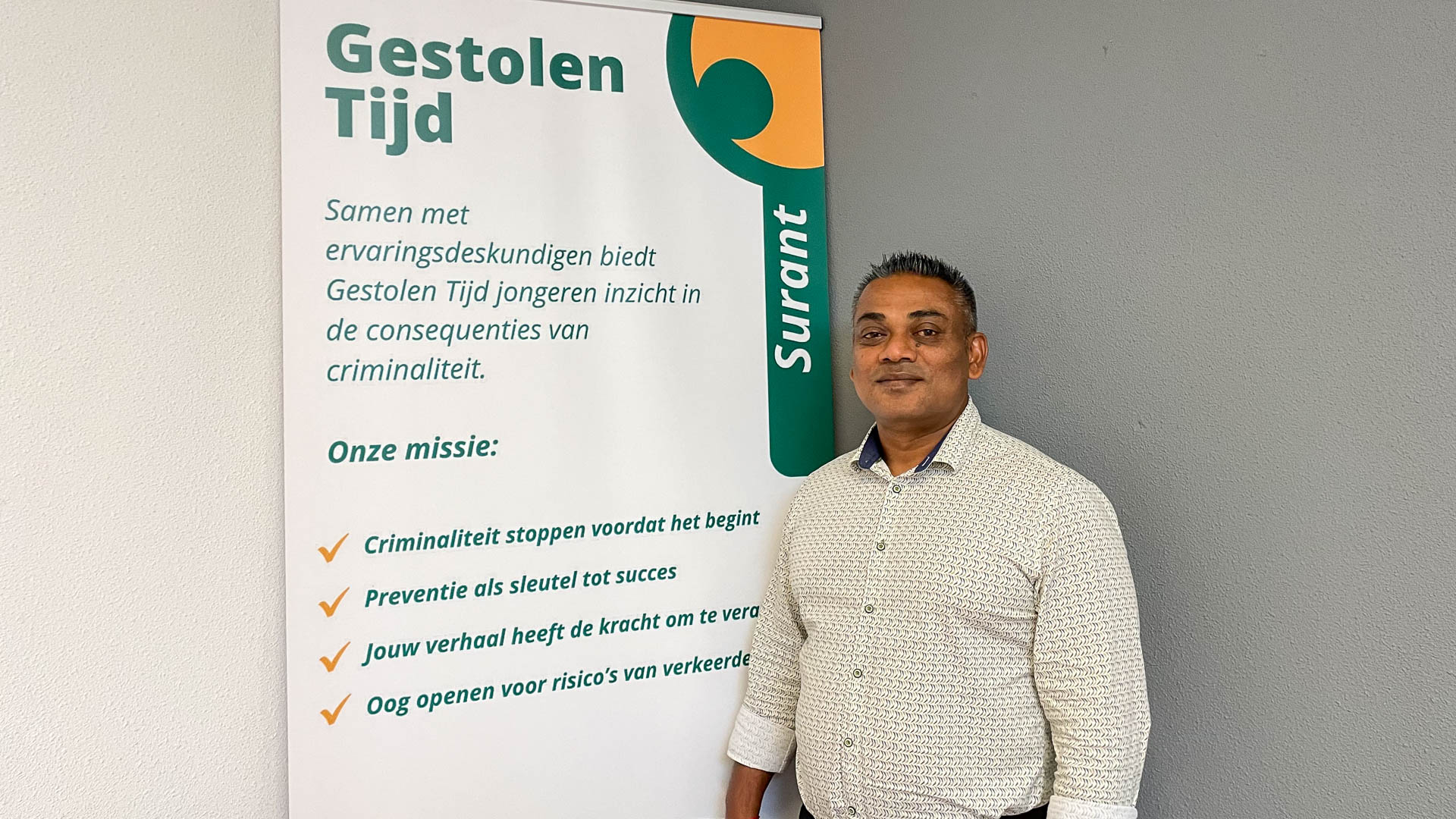
Quinta Betz, a coordinator and client advocate with the local housing assistance organization StraatAllantie with whom I spoke by phone, told me that just getting a bed in a night shelter has a three-month waiting list today. Waiting times rise to one to two years for a permanent studio in a 24-hour shelter like the one Gerrie occupies, and the opportunities for Housing First apartments have nearly disappeared. When I visited Cedric at AMOC, he told me that for the 10 beds his organization operates, he gets 60 requests every night. The system is overwhelmed.
The government’s decision to allocate priority to the most desperate cases helps the most downtrodden but also leads to some perverse effects. Dennis Lahey of MDHG explains that if a Dutch citizen falls on hard times and goes to a municipality or non-profit for help, they’ll be told “you have an income, you lost your house, you figure it out.”
Pushed aside, they come to MDHG even if they don’t use drugs because of its open-door policy. “We saw a lot of people who were quite okay. But the municipality wouldn’t help them as they were deemed self-reliant. After six months, nine months, they’d start drinking too much, using drugs, needing psychiatric help, getting in trouble with the law. Then they’d come back, and we would help them apply for benefits.”
Under Dennis’s leadership, MDHG has tried to advocate with the city, urging officials to be less restrictive with rules governing whom social service organizations can help. “Don’t you think it would be cheaper to help people when they are self-reliant instead of letting people go down the drain?” he asked rhetorically, clearly exasperated.
Municipalities seem to have other ideas, however. Restrictions have increased as waiting lists for services have ballooned. In 2015, the national government struck down rules by cities including Amsterdam and Rotterdam restricting benefits to those who had lived there for two to four years. The reasoning was that municipalities are supposed to form comprehensive assessments about where people asking for benefits have lived during the past five years, where they have the best chance to recover, and assist in making warm hand-offs to other municipalities if necessary. In practice, Dennis explains, municipalities like Amsterdam refuse to help people who aren’t longtime residents to encourage people to move to other cities on their own.
Because social benefit programs are implemented by cities, those who become homeless in Amsterdam after say 18 months of residency will struggle to get help from Amsterdam or from the city they previously lived in, leaving them to fall through the cracks. Quinta Betz of StraatAllantie shared the story of a Dutch mother with a child who was circumstantially homeless and was declined shelter because she had lived in Amsterdam fewer than four years. Quinta estimates that most people she sees through her work are economically homeless, more than those struggling with serious addiction or mental illness.
In my everyday life, housing is the number one complaint I hear about from friends and from strangers in Amsterdam. Depending on their background, they may blame bad government regulation, zoning laws, an influx of under-paid migrants and over-paid expats or the general growth of the country’s population.
It is in no small part because of the acute housing crisis that the firebrand far-right leader Geert Wilders won last year’s election arguing that Dutch citizens were losing out on social housing to refugees and immigrants. The new government’s coalition agreement includes a proposal banning social housing priority status for refugees—even though the reality is that the social services I’ve described above are geared almost exclusively toward the Dutch.
Non-Dutch people may receive some help from disparate non-profit organizations like AMOC, but the vast majority of government programs and social service organizations serve only Dutch citizens. Refugees like those from Ukraine may have special access to some services, but only if legally recognized in the country. A police officer covering Oosterpark estimated that 50 percent of those out on the street are Dutch, 25 percent are EU citizens and 25 percent are from outside the European Union.
The big lessons for me from my investigation are twofold. The first is that housing policy is drug policy. The second is that the Dutch are not ultra-progressives who believe that the abuse of hard drugs and alcohol is acceptable, let alone something to be condoned. Rather, they are pragmatic at managing a problem they see as systemic in a cost-effective manner. Yes, their housing policies help the people who problematically use drugs and alcohol, but first and foremost they improve the everyday lives of the public, save taxpayer money and increases profits for businesses. The latter argument is also an easier sell to the public.
The Dutch Housing First example makes a compelling case for focusing on housing capacity rather than clinical addiction care availability as a cure to the overlapping addiction, mental health and homelessness crises playing out on streets across America and the world. Although the previous government announced an ambitious new plan to end homelessness, it’s unclear if the new far-right coalition will follow it or make good on its promises to slash funding for the social services that currently ensure the profitable, safe and nuisance-free lives the Dutch have come to expect.
For now, the streets of Amsterdam’s city center are still flooded with drugs and people using drugs. However, unlike the homeless people they replaced, tourists from around the world accompany their legal and illegal drug purchases with shopping sprees, Instagram-worthy canal rides, and fries with too much mayo all while gobbling up much-needed housing units through Airbnb along the way. A boon for business profits and tax authorities, the noisy visitors are only marginally more accepted by locals who still avoid the city center, albeit now for different reasons.
Top photo: Hans Cornilessen in the Amsterdam housing shelter

